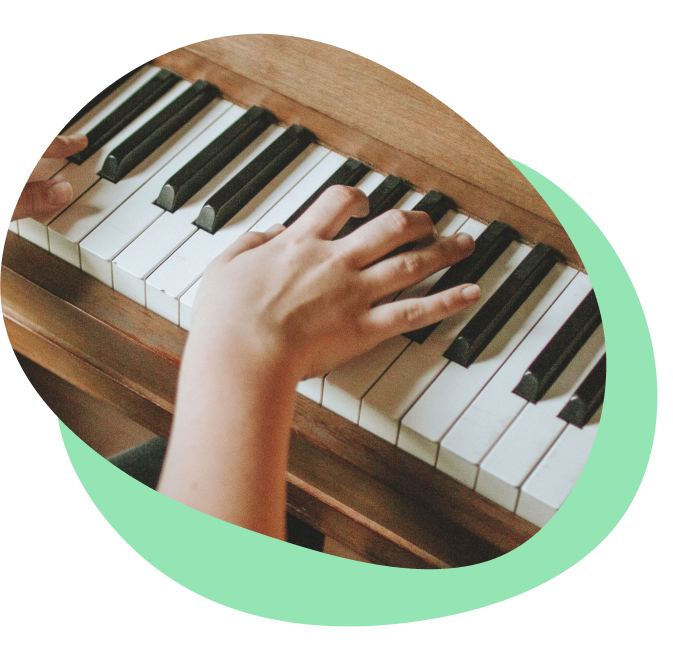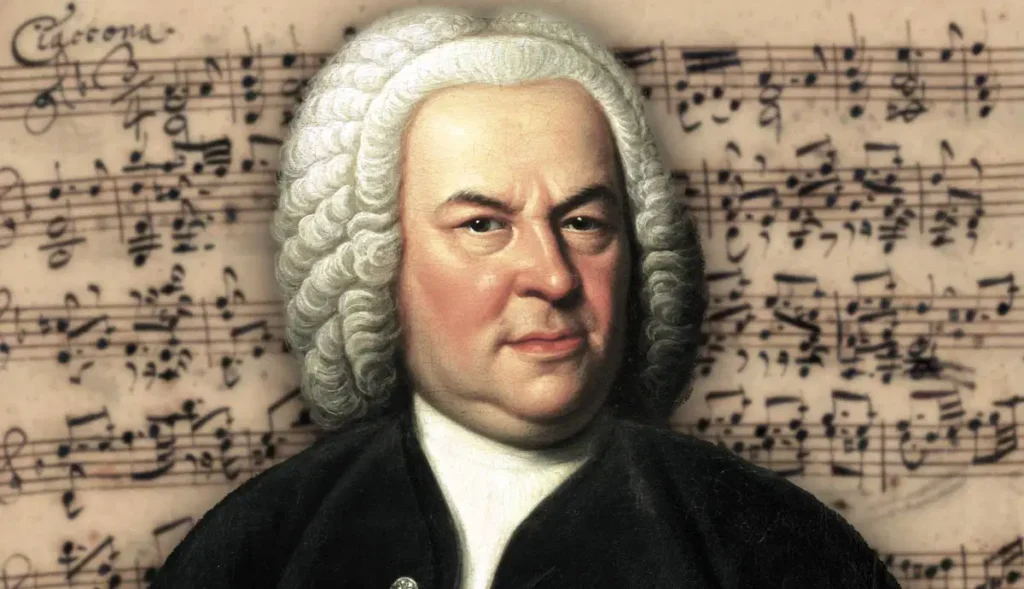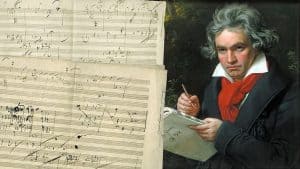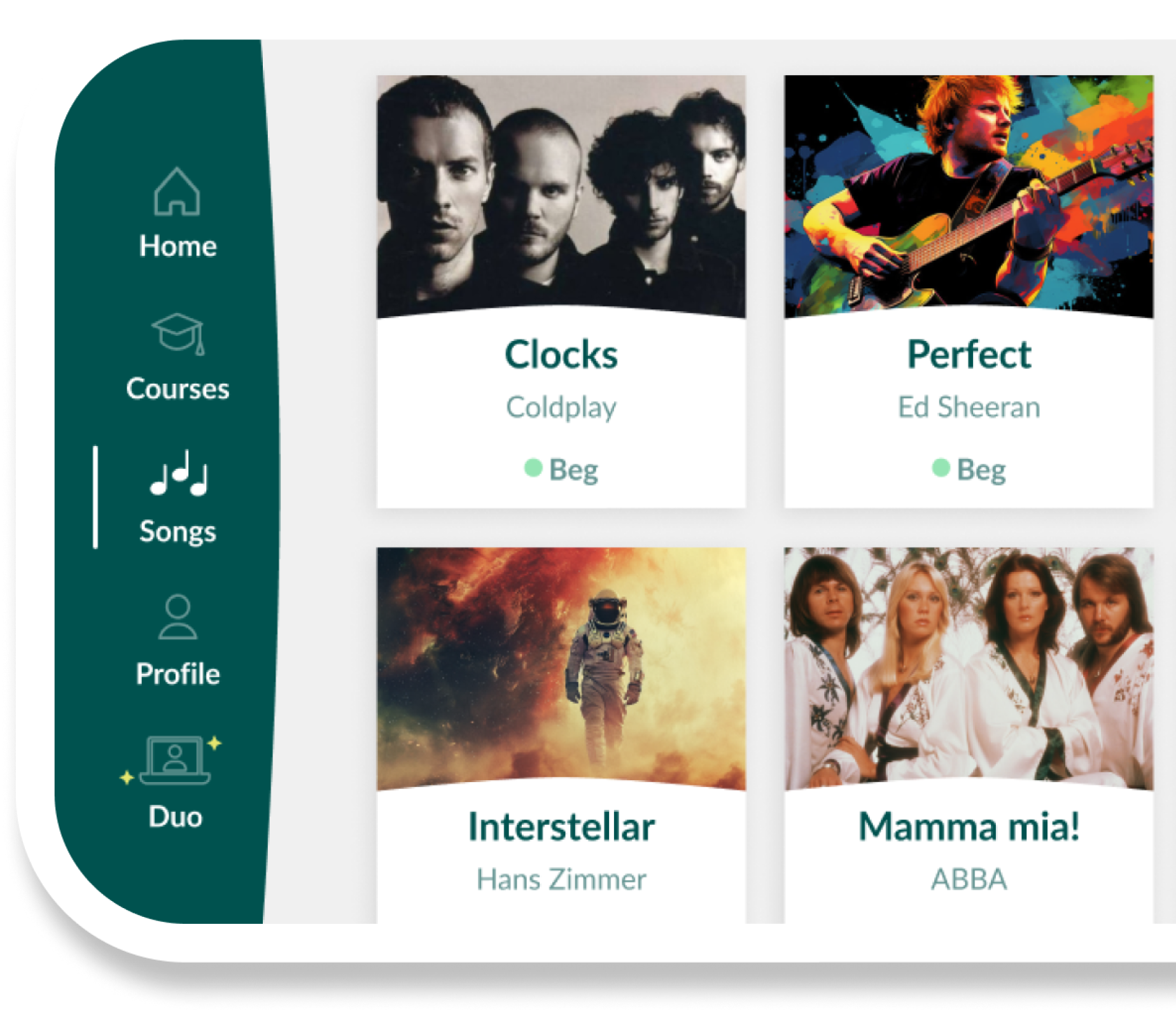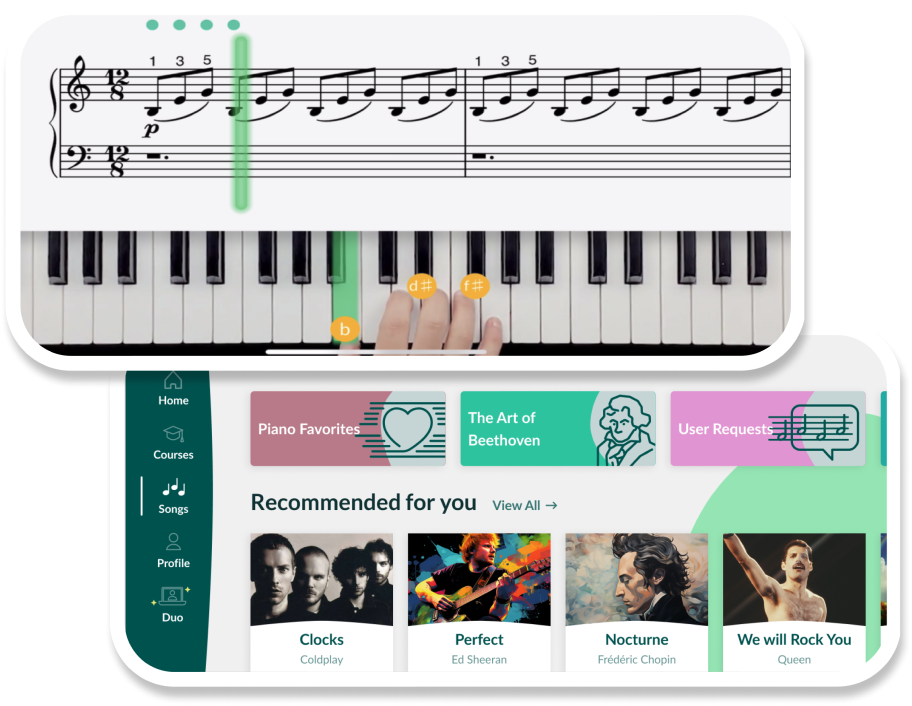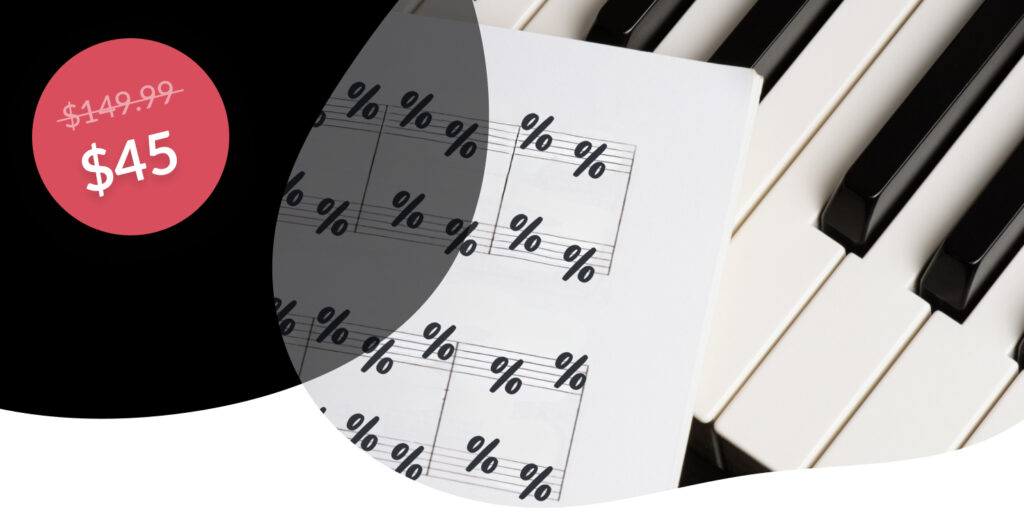Bach’s music isn’t just for experts. From graceful minuets to soulful melodies, his works offer something even beginners can enjoy. This guide rounds up some of the most famous and approachable Bach pieces, perfect for building skill and confidence at the piano. Let’s explore why his music still inspires pianists today.
- Fall in love with the music - Learn your favorite songs, at a level suitable for you.
- Enjoy interactive piano lessons - Explore courses covering music theory, technique chords & more.
- Get real-time feedback - Skoove's feedback tells you what went well and what needs practice.
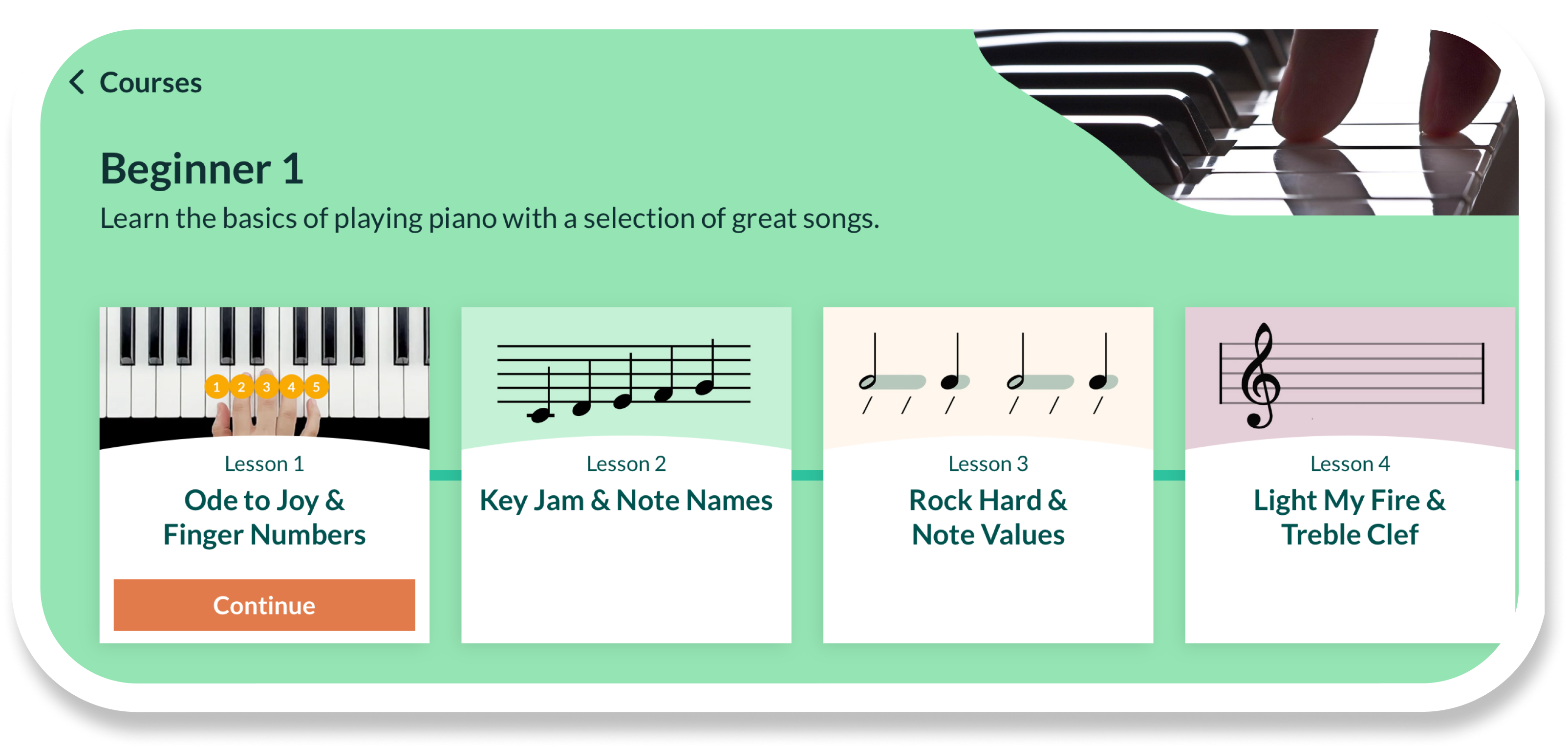
1. “Air on the G String” (from Orchestral Suite No. 3)
This serene and lyrical piece is one of the most famous Bach pieces, often heard in weddings, films, and emotional moments. The gentle melody floats effortlessly above a steady bass line, creating a meditative atmosphere. Though originally written for orchestra, simplified piano versions bring out the same emotional depth.
For beginners, Air on the G String is a wonderful exercise in expression and phrasing. It teaches you to maintain a calm tempo while shaping each line with feeling. If you’re exploring Bach classical music for the first time, this composition is an excellent gateway into his more lyrical works.
2. “Aria” (from Goldberg Variations)
The Aria from the Goldberg Variations is the bookend to one of Bach’s most celebrated keyboard collections. Despite the surrounding variations being technically advanced, this opening Aria is tender and minimalist, built around a repeating bass pattern with ornate melodic lines.
Its slow pace and deliberate phrasing make it a strong candidate for early-intermediate pianists. While it’s not technically demanding, it does challenge you to control your touch and dynamics, making it ideal for learning nuance in Bach music rather than just speed or finger movement.
3. “Arioso” (from Cantata BWV 156)
“Arioso” is one of Bach’s most emotionally resonant melodies. Originally composed for oboe and orchestra, it has since been arranged into a hauntingly beautiful piece for piano. It blends the expressiveness of vocal music with the structure of Baroque instrumental writing.
Playing this piece helps beginners learn legato phrasing and dynamic shading. It’s not just about hitting the notes, it’s about telling a story through sound.
4. “Minuet in G Major” (BWV Anh. 114)
Easily one of the most famous Bach piano songs and arguably one of the first pieces many students learn, Minuet in G Major is light, elegant, and perfectly structured for practice. Despite its attribution to Bach, it was likely composed by Christian Petzold and included in the Notebook for Anna Magdalena Bach.
Still, it captures the essence of Bach’s teaching approach. The melody is easy to follow, and the harmonies are intuitive. This Bach composition helps young players grasp form, balance, and early ornamentation in music, and it’s fun to perform thanks to its lively dance rhythm.
5. “Badinerie” (from Orchestral Suite No. 2)
This is one of Johann Sebastian Bach’s most famous pieces, known for its joyful, fluttering melody. Badinerie, which means “jesting” or “banter” in French, was written for flute and strings but is often transcribed for solo piano in simplified versions that retain its playful charm.
For beginner pianists, Badinerie introduces the concept of fast note passages and staccato articulation without being too overwhelming. It’s a good challenge in finger independence and light touch, hallmarks of Bach piano technique. Plus, it’s a crowd-pleaser, making it a great piece for early performances.
6. “Bist du bei mir” (BWV 508)
A timeless favorite, Bist du bei mir (“If you are with me”) is not originally by Bach, but it appears in his wife’s Notebook for Anna Magdalena. Its sentimental melody and simple accompaniment make it a staple in the world of famous Bach pieces suitable for all levels.
It is especially valuable for teaching phrasing and emotional expression. Students can focus on tone and timing rather than technical complexity. This piece also helps develop confidence in reading harmony, with gentle broken chords supporting the graceful melody.
7. “Bourrée in E Minor” (from Lute Suite No. 1, BWV 996)
This is one of the most famous Bach pieces for solo instrument and a common piece in both guitar and piano literature. It’s a spirited two-voice work that dances between a bassline and a melody, offering a good challenge for coordination.
On the piano, it helps players build independence between left and right hands. While the rhythm is steady and march-like, the melodic embellishments require agility and control. It’s a great introduction to Bach’s contrapuntal writing in a digestible, accessible format.
8. “Cello Suite No. 1” (arranged for piano)
Arguably Johann Sebastian Bach’s most famous piece, the prelude from Cello Suite No. 1 is instantly recognizable. Though written for solo cello, it has been widely arranged for piano and remains one of the best pieces to explore Bach’s sense of motion and harmony.
For beginners, this piece teaches flow and momentum. The arpeggiated patterns help develop smooth transitions across hand positions, and the emotional arc, starting gentle and building to a soaring peak, is perfect for practicing dynamics and tempo control. This Bach piano adaptation is both inspiring and achievable with practice.
9. “Jesu, Joy of Man’s Desiring” (BWV 147)
Among Bach’s most famous songs, this chorale melody is widely used in weddings and spiritual ceremonies. Its gentle arpeggios and steady rhythm create a comforting, uplifting effect. Even in simplified versions, the spirit of the piece is never lost.
This piece is fantastic for learning broken chords, even touch, and phrasing. It encourages a calm, thoughtful performance, letting players connect with the emotional power of sacred Bach music. It’s also a wonderful piece to perform for others, thanks to its universal appeal.
10. “March in D Major” (BWV Anh. 122)
Bright and confident, March in D Major comes from the Notebook for Anna Magdalena Bach, a collection intended for family and student use. Its clarity and structure make it a favorite among piano teachers for developing early technical skills.
Its joyful mood and short length make it perfect for young learners or beginners looking to add variety to their repertoire. With consistent rhythmic patterns and predictable phrasing, it’s easy to memorize and fun to play, ideal for building early confidence.
11. “Musette in D Major” (BWV Anh. 126)
This lively piece has a rustic charm, mimicking the sound of a French folk instrument. Also from the Notebook for Anna Magdalena Bach, Musette is one of those Bach compositions that delivers personality and practice in one elegant package.
It introduces students to articulation, lively rhythm, and phrasing without being overwhelming. With its repetitive structure and bright energy, it becomes an enjoyable performance piece that’s especially appealing to children and beginner players.
12. “Prelude” (BWV 939)
Small but mighty, this short prelude teaches some of the fundamental aspects of Bach piano music. It features broken chords and a consistent rhythm, ideal for hand independence and pattern recognition. Despite its brevity, it’s packed with musical value.
Playing this piece can improve your ability to read chord progressions and practice voicing, especially in the right hand. It’s a stepping stone to more complex Bach compositions, giving students a solid grasp of Baroque style.
13. “Sheep May Safely Graze” (from Cantata BWV 208)
This elegant and calming piece has long been appreciated for its peaceful beauty. Though originally an orchestral work, it translates beautifully to piano and is often included in simplified classical anthologies.
The flowing lines and simple harmonic structure make it an ideal piece to explore dynamic contrast and expressive phrasing. If you’re looking for a gentle, meditative addition to your Bach piano repertoire, this is the one to learn.
14. “Toccata and Fugue in D Minor” (BWV 565)
One of the most iconic Bach classical music works ever, the Toccata and Fugue is most famous in its original organ version. However, simplified piano arrangements exist that allow learners to experience its drama and grandeur in a more manageable form.
The toccata section is powerful and expressive, helping pianists build confidence with bold dynamics. Even in simplified versions, this piece helps build a sense of timing, energy, and dramatic tension, an unforgettable piece to perform.
15. “Wachet auf, ruft uns die Stimme” (BWV 140)
Known in English as “Sleepers, Wake”, this beautiful chorale is one of Bach’s greatest sacred melodies. With its slow tempo and simple harmonies, it’s ideal for beginners seeking meaningful, spiritual Bach compositions to play.
It emphasizes phrasing, voicing, and smooth hand transitions. The piece’s structure allows for thoughtful interpretation, making it a rewarding addition to any beginner’s classical collection. If you’re looking for a dignified and solemn piece to explore sacred Bach music, this is an excellent place to start.
Who was J.S. Bach?
Johann Sebastian Bach (1685–1750) was a German composer and musician of the Baroque period, widely regarded as one of the greatest composers in Western classical music. His music shaped the foundation of harmony, counterpoint, and instrumental technique that still influence musicians today.
While Bach’s reputation is often tied to complex organ works and sacred music, he also composed countless keyboard pieces ideal for learners. These include Bach piano pieces written for his children or students filled with musical charm, structure, and creativity. Many of these remain some of the most famous Bach compositions ever written.
These Bach classics are more than exercises, they’re stepping stones into the world of a musical genius. Ready to start playing and explore more? Let Skoove be your guide into the expressive world of classical music.
Author of this blog post:
Susana Pérez Posada

With over seven years of piano education and a deep passion for music therapy, Susana brings a unique blend of expertise to Skoove. A graduate in Music Therapy from SRH Hochschule Heidelberg and an experienced classical pianist from Universidad EAFIT, she infuses her teaching with a holistic approach that transcends traditional piano lessons. Susana’s writings for Skoove combine her rich musical knowledge with engaging storytelling, enriching the learning experience for pianists of all levels. Away from the piano, she loves exploring new places and immersing herself in a good book, believing these diverse experiences enhance her creative teaching style.




